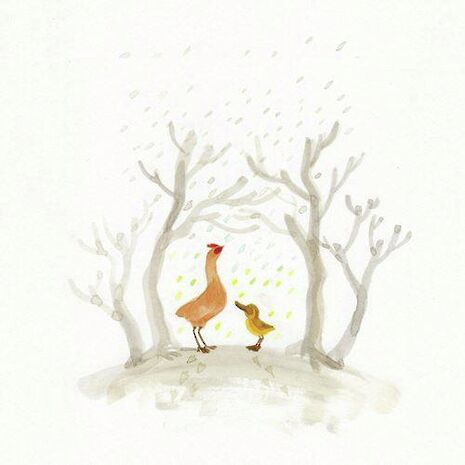The Hen Comes Out of the Yard
Rebecca Vaa is left perplexed by this odd adaptation of a Korean children’s story

Translations and adaptations are always difficult; not only must the language be translated, but the adaptation must also translate the values, metaphysics and worldview of a story, in order for it to have meaning for the new language and culture to which it is brought. Simultaneously, the core structure of the story and its plot must also be preserved. It is easy for many things to be lost in translation and adaptation, and this is sadly the case for ‘The Hen Comes Out of the Yard’. The purpose, plot and message of the play are lost in a confusing and ambiguous script.
The play, adapted from a Korean children’s story, tells the story of a domesticated hen, Sprout, who is no longer able to lay eggs and is therefore thrown out of the coop, forced into a dangerous world filled with weasels and apathetic, unwelcoming barnyard animals refusing to take her in. Alone and frightened, all she longs for is to be a mother and to hatch her own egg. The story is told as a narrative by Sprout to her son, a duck, in order to persuade him to leave home. Although the story at times has touching moments and interesting turns of events, the script is not strong enough to carry the narrative. The story follows no clear structure, often seeming sporadic and arbitrary, and leaving too many details unexplained. Relationships between characters are not developed, such as the relationship between Sprout and the mallard duck, Straggler. The lack of understanding for the connections between the characters leads to a lack of understanding for the motivations of said characters as well as the progression of the plot. Simultaneously, the ambiguity of which animals each character was portraying and the settings of different segments, left the audience even more confused.
Whilst watching the play, it was clear that it was adapted from a children’s story, with its elements of fantasy and fable, and the two-dimensionality of many of the characters. However, rather than embracing its form, the play was performed with strong dramatic elements and intensity, as if it were a drama. It would have played to the play’s strengths and magnified the story-telling and the tale itself if it had been dramatized and staged as children’s theatre. The lack of continuity between the content of the story and the form in which it was presented made it seem out of place and incongruous.
Aside from the ambiguity of the plot and adaptation, the production in itself was rather slick. Lighting and sound were utilized very well to allow for smooth scene changes, as well as signify Sprout’s transitions through her different memories. Costumes were creative, using cleverly placed feathers and facial markings to reveal that the characters were in fact animals, rather than attempting to fashion costumes in the likeness of the animals. This could have been taken even further, however, in order to clarify which characters resembled which animals. The acting of the production was also strong, which engaged the audience and gave life to the story despite its vagueness and confusion. Especially commendable was the sweet, moving performance given by Amy Malone as the spirited heroine, yearning to fulfill her dreams and achieve her goals. Amy not only mastered the art of story telling, effortlessly moving between reliving her memories and explicitly narrating to the audience, but also captured the integrity, doubts, fears and inner conflicts of the character as she moves through her adventure. Megan Dunne also impressed, with her seamless transition between portraying the characters of the ominous and terror-inducing weasel and the stuck-up barn hen.
The production itself thus has some very strong aspects that draw the audience into the story, despite its flaws in script. This story, bringing a wonderful aspect of Korean culture to the Cambridge theatre scene, definitely has potential, but the script must be strengthened and re-examined, and the show possibly staged and dramatized in a manner resonating with its character as a children’s story.
 News / Night Climbers call for Cambridge to cut ties with Israel in new stunt15 April 2024
News / Night Climbers call for Cambridge to cut ties with Israel in new stunt15 April 2024 News / Police to stop searching for stolen Fitzwilliam jade17 April 2024
News / Police to stop searching for stolen Fitzwilliam jade17 April 2024 News / Cambridge University cancer hospital opposed by environmental agency12 April 2024
News / Cambridge University cancer hospital opposed by environmental agency12 April 2024 Interviews / In conversation with Dorothy Byrne1 March 2024
Interviews / In conversation with Dorothy Byrne1 March 2024 Interviews / ‘It fills you with a sense of awe’: the year abroad experience17 April 2024
Interviews / ‘It fills you with a sense of awe’: the year abroad experience17 April 2024


